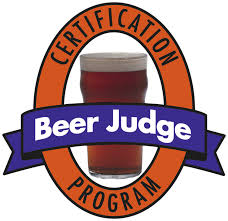 As I mentioned a week ago (in this post), I have been spending a bit of time studying the new BJCP 2015 Style Guidelines. I know I am totally late to the game on this as the new guidelines came out months ago. I did look at them at the time but with various life things I didn’t really study them.
As I mentioned a week ago (in this post), I have been spending a bit of time studying the new BJCP 2015 Style Guidelines. I know I am totally late to the game on this as the new guidelines came out months ago. I did look at them at the time but with various life things I didn’t really study them.
But I finally committed some time to take a closer look and begin the preparing for the new world of beer judging. This is something every beer judge needs to do in the coming months so they are well versed in the new categories and style definitions.
I have no doubt that as a loyal BJCP judge I will learn the new guidelines and judge accordingly. I even suspect in time I will embrace the new names and structures and incorporate them into my writing and reviews. I respect the work my colleagues do among the higher ranks of the BJCP to continually improve the quality of beer judging in the craft beer world.
But also as a loyal BJCP judge I believe I have the right to comment on the state of the guidelines. Sure, I am late in doing so but at this point the guide is finalized so this endeavour is more for discussion than influence (and mostly a chance to rant).
First I want to make clear that my comments below need to be interpreted in the context of my respect for my fellow judges and knowing it is not easy to come up with a definitive set of rules. These comments are meant as constructive observation and in no way are intended to criticize the hardworking volunteers who put the new guidelines together. I respect their work and can only imagine how many errors I would make if it was up to me.
That said, let me get to my thoughts (if you care). Most of my thoughts are on the categorization decisions. On the whole I have no quibbles with their descriptors and statistics. I believe on the whole that stuff is very well researched and serve as a valuable guidepost for judges. Which maybe is the important thing, but what the hell, I will rant anyway!
Let me start with some positives. On the whole I think the new version does a much better job of building in all the existing styles of beer. They include beer unfairly excluded in the past and have done a nice job of embracing new innovations. In particular I am a fan of including Kellerbier, British Golden Ale, Wheatwine, American Wild Ale and Alternative Fermentables. I also have to say that upon reflection I appreciate the elegance of the Specialty IPA style, which builds in a useful flexibility with this ever-changing style.
I also like the quiet addition of the Argentine and Italian styles in an appendix. The jury is still out on those, but adding them in as an appendix is a respectful move. I also like the Alternate Categorizations as a useful transition tool. I also believe, and this may be controversial, creating separate guidelines for mead and cider is a great idea. It doesn’t mean we don’t judge those beverages; I just feel they need their own guidelines rather than be tacked on as an after-thought to beer.
Overall, though, and as I mentioned a few days ago (again, here), I am struggling to find the central logic in their categorization. The last edition had a core division – ale vs. lager (with a nod to the couple of anomalies) – and a overall leaning toward flavour/colour segregation with region as a secondary characteristic and ingredients as an exception. Not everything fit perfectly, but on the whole it was a stable categorization.
I feel in the new guidelines they have lost sight of that logical simplicity. I see styles based on flavour and colour, sometimes together and sometimes separately. I also find categories based on region, alcohol strength and ingredients. I know the world of beer has become more complex but if feels they could have found a more broadly encompassing logical base.
Examples of this problem include: the existence of Czech Lager,which is a legitimate historical reality but the beer are not sufficiently different than their European counterparts to justify their own category; and the strange division of European Lagers which leads to odd combinations of beer (e.g., Kolsch with Pils). I also am perturbed by the removal of the lager/ale division, which is the most fundamental division in beer. That decision does a great disservice to beer educators everywhere.
My next big critique is the blowing up of categories for no reason. The most egregious is the scattering of Stout, although the disappearance of Porter is a close second (I am more understanding of the collapse of Brown Ale). Stouts have a clear, single defining feature – their inky blackness and roast character (which are linked). It distinguishes this style from every other beer. Just because American Stouts are hoppier and Russian Imperial Stouts are stronger, doesn’t erase their commonality. And it doesn’t justify atomizing the category.
The destruction of the stout category is a symptom of a lurking Americanism in the guideline. I fully acknowledge that American craft brewers have re-defined many existing styles and pushed boundaries on many others. That is great. But is adding more bitterness or increasing the alcohol content sufficient to breach the beer’s relations with its non-American cousins? An American Blonde Ale has more in common with a British Golden Ale than it does an American Pale Ale, just as an American Brown has more in common with a British Brown than a California Common (which really is a misfit in the Amber and Brown American Beer).
My final major comment is that there are simply too many orphans and misfits in thew new categories, which hints at the lack of logical simplicity I talk about. Here are just a few examples: Leichtbier and Kolsch in Pale Bitter European Beer; Vienna Lager in Amber Bitter European Lager; Baltic Porter mixed in with Doppelbock and Eisbock; Kellerbier is not defined by colour, but is categorized by colour. And I save the worst for last – Rauchbier in Amber Malty European Lager rather than in Smoked Beer. Hello?!? Smoke is what makes rauchbier, well, rauchbier (it’s its name, for God’s sake!).
I have a few more minor observations, which I list here just so the whole thing is off my chest and I won’t bother you again about it:
- I strongly disagree with the removal of Extra Special Bitter, claiming it has been “co-opted” by Fuller’s and that “no one thinks of it as a generic class of beer”. Well I, for one, do. The whole point about styles is to allow for interpretation. Fuller’s is fuller and maltier, but it is still closely related to drier versions I have tasted.
- I am not buying the separation between Irish Stout and Irish Extra Stout.
- Wee Heavy fits better in Scottish Ale than English Strong, although I do like the renaming of Scottish Ales.
- I think DIPA fits in IPA, not in Strong American Ale as that is its base beer.
- I like the separation of Trappist Ale from other Strong Belgian Ale.
- While it fits stylistically with Belgian Ales, I do feel the need to note that Biere de Garde is actually French, not Belgian
- The Historical category is a future problem waiting to happen. Isolating some styles and not others will come to bite them on the bum.
My final word (if any of you have made it this far). I tend to be a late adapter who resists change. So interpret some of my grouchy comments in that context. Ask me again in two years what I think. My response might be quite different.



February 29, 2016 at 4:21 PM
A lot of good points there.
Re: ESB – I think the point is that the nomenclature is being moved to that used in the UK, as opposed to common North American Practice. I have no notion whether their position is accurate in teh UK, but I do know that most ESB I have had on this side of the pond is not particularly extra special. 🙂
I am on your side where it comes to Irish Stout / Extra Stout / Foreign Extra Stout. (Although I am glad Tropical stout is now its own category)
I agree regarding the DIPA location.
I disagree with you on the historic styles category. I think the notion is to have a category where items can be added and subtracted without as much drama?
Overall, I think they did a pretty good job of reflecting the changes in the market and homebrew culture. We will see how well it turns out when competitions start being judged under these guidelines.
March 1, 2016 at 12:27 PM
Rauchbier not being placed in Smoked Beer… how can that possibly make any sense?
March 1, 2016 at 9:35 PM
ESB is one of my favourite styles, despite not really being that Extra, or Special :), but rather a balanced pale ale using classic English hops. It’s not that easy to find on this side of the pond now amongst the IPAs, DIPAs and TIPAs and I wonder if this change in its status will make it an even rarer find. Sad, if true.
March 30, 2016 at 11:39 AM
What are your feelings on the Brewers Association style guidelines? They are more traditional, based on Michael Jackson’s work, but their general simplicity means new styles can be inserted easily. It seems like the BJCP and the BA guidelines are diverging more, with the BJCP more the homebrew go-to, the BA the commercial brewer go-to. The other quirk is the loose style guides that the Beer Advocate and RateBeer sites use.
April 1, 2016 at 9:54 AM
That is a great question, Peter. The BA guidelines are based on a much simpler logic for categories, which does allow for more flexibility. However, I find it has less coherence around beer of similar families. By focusing mostly on geographic origin, they lose the ability to cluster based upon flavour or other characteristics. I also think the BJCP has a more robust approach to style description – offering history, ingredients and examples to draw out the subtleties. The BA guide only has short tasting notes. I also find some of the styles in the BA guide are too generic and could incorporate too wide a range of beer. Styles should create boundaries as much as they create space.
Both are quite workable and I admire the work of both groups. Myself I prefer the BJCP for its more robust approach, but I am not critical of the BA approach.